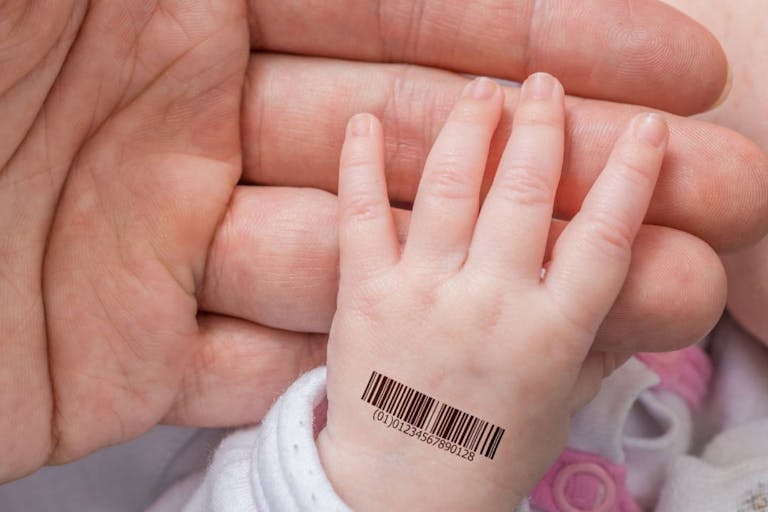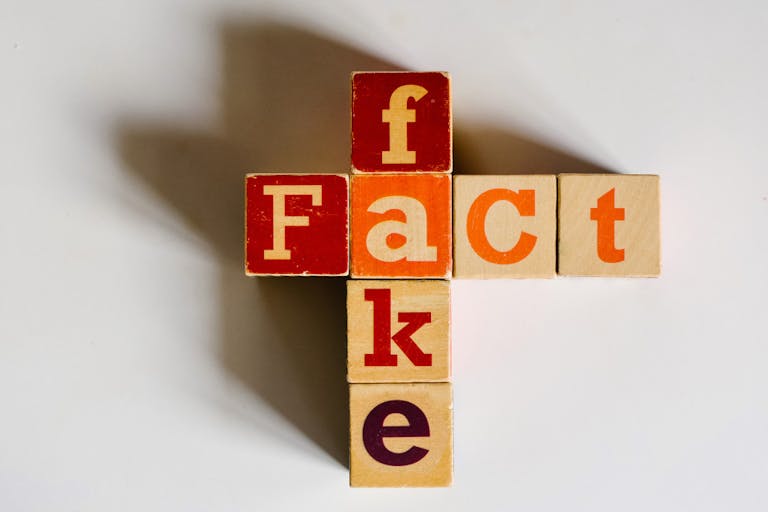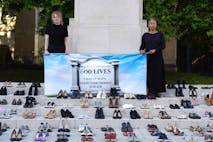
Why more regulation won't solve the ethical IVF crisis
Angeline Tan
·
The abortion industry is trying to hide the truth with this dishonest tactic
There is no shortage to the number of euphemisms abortion advocates will use to hide the reality of what abortion is, and what it does. Unfortunately, these manipulative and dishonest phrases work well to mislead the public, which can be fooled into believing that abortion is something altruistic, compassionate, and even necessary.
But what are the keywords to look for? Our primer will make sure you remain informed — and that you know what the truth about abortion really is.
In the past, supporting legal abortion was referred to as being “pro-choice.” But that label seems to have faded; today, there are numerous other preferred phrases and euphemisms meant to shift the way people look at abortion. Instead of being something that an individual person can choose for themselves, abortion is now presented as an inherent right that bestows freedom on individuals.
Article continues below
Dear Reader,
In 2026, Live Action is heading straight where the battle is fiercest: college campuses.
We have a bold initiative to establish 100 Live Action campus chapters within the next year, and your partnership will make it a success!
Your support today will help train and equip young leaders, bring Live Action’s educational content into academic environments, host on-campus events and debates, and empower students to challenge the pro-abortion status quo with truth and compassion.
Invest in pro-life grassroots outreach and cultural formation with your DOUBLED year-end gift!
“Reproductive Rights”: The abortion industry, along with the activists and politicians who support it, frequently campaign in favor of so-called “reproductive rights.” This is often used as a catch-all to include anything relating to reproductive health care, including legitimate health care. Prenatal care, postpartum care, and gynecological care are lumped together under the umbrella of “reproductive rights,” with abortion casually added in, as if they’re all the same thing. But make no mistake: when someone is talking about reproductive rights, the focus is on abortion. And ultimately, it’s important to note that there can never be a “right” to intentionally kill an innocent human being, no matter his size, level of development, location, or degree of dependency. A right is something to which all human beings are intrinsically entitled, and there can never be a legitimate right to deliberately take another innocent human being’s life.
“Reproductive Freedom”: Abortion groups have taken to referring to abortion as “reproductive freedom” in recent years. All this means is the “freedom” to intentionally kill a preborn human being on demand — but considering how many abortions are coerced, and the overall societal failings that drive women to feel abortion is their only option, it doesn’t seem that actual freedom plays much of a role in abortion at all.
“Bodily Autonomy”: The phrase “bodily autonomy” is the newer version of the now-outdated “my body, my choice.” The idea is that women get to decide what happens to their own bodies. While this is somewhat questionable in light of the fact that laws regulate what people can and cannot do with their bodies, the specific problem with this as it relates to abortion is that the body being destroyed is not the woman’s body; it’s the preborn child’s.

My Body, My Choice: Before “bodily autonomy,” there was “my body, my choice.” But again, abortion doesn’t target a woman’s body; it targets a preborn child’s. It is a scientific fact that life begins at conception — so much so, that scientists have been able to pinpoint the exact moment the new life has been formed. And in that exact moment, the baby’s unique DNA has already been determined — completely separate from his or her mother’s or father’s — along with hair color, eye color, sex, and countless other genetic traits. Approximately three weeks after fertilization, the preborn child’s heart is beating despite the fact that it does not yet have four chambers, and brain waves can be measured just a few weeks after that. So the phrase “my body, my choice” simply serves to hide what is really happening during an abortion, as if the murder of a preborn child is the same thing as a woman deciding to pierce one of her earlobes.
“Abortion Is Health Care”: Abortion activists have increasingly tried to conflate abortion with legitimate health care. No longer are women traveling to seek abortions; no, they’re seeking “health care.” The problem, of course, is that the intentional taking of a human being’s life is not, and can never be, true health care, and furthermore, it does not treat any legitimate health issues. As Dr. Monique Chireau Wubbenhorst testified during a hearing of the U.S. Senate Committee on the Judiciary, abortion “… neither treats, palliates, or prevents any disease and is therefore not health care. This is reinforced by the fact that the majority of OB/GYNs do not perform abortions. Studies show that the percentage that do is declining and has been for decades from a high of 40% in 1985 to between seven and 24% at present. Given this, abortion cannot be considered essential health care for women.”
“Abortion Care”: Abortionists have likewise stopped referring to abortions as simply “abortion.” Now, they refer to it as “abortion care.” The phrasing is intentional; the word “care” evokes the idea of warmth, compassion, and tenderness. It certainly doesn’t bring to mind violence, dismemberment, or abandonment. But abortion is inherently violent; every single time it is committed, a human being is killed. In addition, absolutely nothing is done to help the mothers get out of the situation that has driven them to feel abortion is their only option. Whether they were coerced or are grappling with poverty, abuse, homelessness, or other issues, these women are abandoned and left to their own devices without any support or resources from the abortionists who claim to be offering “care.”

“Pregnancy/Pregnancy Tissue”: The abortion industry refuses to acknowledge the humanity of preborn children; it would threaten their bottom line. So instead of referring to abortion as killing a preborn child, the language used is much more benign, with words like “pregnancy” or “pregnancy tissue” merely being “removed” instead of violently suctioned out of the uterus or dismembered limb by limb. Consider how Planned Parenthood describes it: “[i]n-clinic abortion works by using suction to take a pregnancy out of your uterus.” But is it even accurate to say that a pregnancy is being removed? (Pregnancy is the period of time from fertilization to birth, not something that is in the womb.) Or is it a human being?
“Products of Conception”: Likewise, “products of conception” is a phrase frequently used to refer to preborn children. MSI Reproductive Choices, a global abortion conglomerate, even uses this phrase when referring to abortion complications — saying women have “retained products of conception.” This would mean the abortionist left the placenta, and/or pieces of the baby’s body, inside the mother’s uterus, leading to life-threatening infection. But “retained products of conception” sounds so much better than “the abortionist accidentally left the baby’s skull, one of the arms, and both legs in the uterus,” doesn’t it?
“Electrical” or “Cardiac Activity”: Prenatal heartbeats have become controversial… not because they don’t exist, but because it’s not beneficial to the abortion industry to acknowledge them. The abortion industry and its defenders now refer to a preborn human’s beating heart as nothing more than meaningless “cardiac activity” or “electric activity.” Nevermind that the heart, at just over three weeks after fertilization, is actually pumping blood through the body despite not yet having four chambers. The absurdity is that the term “cardiac” most often pertains to the heart, so claiming there’s no “heartbeat” while claiming there is cardiac activity is a little like saying “six of one and half a dozen of the other.” Without the activity of the heart pumping blood throughout the child’s tiny body, the baby’s body cannot continue to grow and thrive.

Language matters. How we refer to the things around us shapes how we view the world. And these euphemisms are intentional; they are meant to manipulate people into seeing the intentional killing of preborn children as something it is not. Even the word ‘abortion’ itself comes from the Latin word “abortiō,” which means to pass away or miscarry, as opposed to intentionally killing a preborn child. The abortion industry is eager to ensure that the humanity of preborn children is erased, and that the reality surrounding abortion is blurred as much as possible.
Live Action News is pro-life news and commentary from a pro-life perspective.
Contact editor@liveaction.org for questions, corrections, or if you are seeking permission to reprint any Live Action News content.
Guest Articles: To submit a guest article to Live Action News, email editor@liveaction.org with an attached Word document of 800-1000 words. Please also attach any photos relevant to your submission if applicable. If your submission is accepted for publication, you will be notified within three weeks. Guest articles are not compensated (see our Open License Agreement). Thank you for your interest in Live Action News!

Angeline Tan
·
Analysis
Cassy Cooke
·
Analysis
Angeline Tan
·
Analysis
Cassy Cooke
·
Analysis
Angeline Tan
·
Analysis
Cassy Cooke
·
Analysis
Cassy Cooke
·
Analysis
Cassy Cooke
·
International
Cassy Cooke
·
Politics
Cassy Cooke
·
Analysis
Cassy Cooke
·